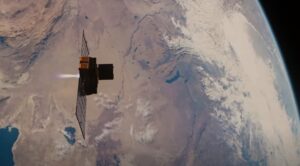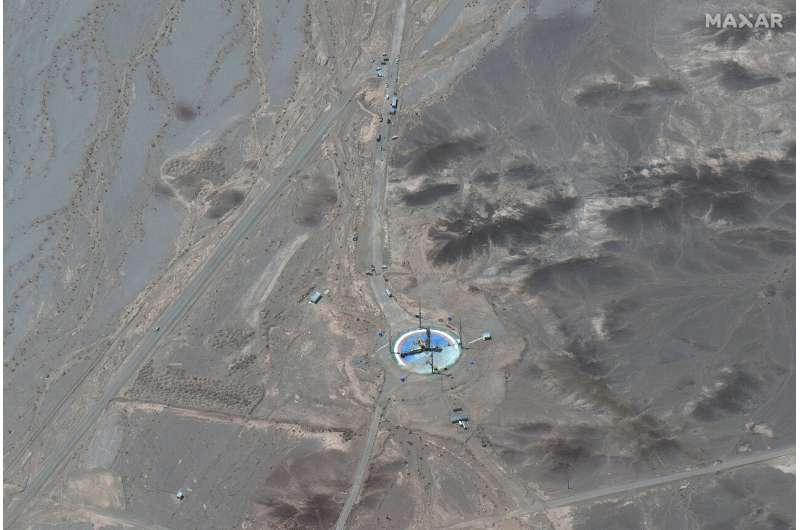FAA requires SpaceX to make environmental changes to Starbase in Texas
Wednesday, 15 June 2022 11:52 The Federal Aviation Administration on Monday said SpaceX will be required to make more than 75 changes to the orbital launch program at its Starbase launch site in Texas after determining there would be some environmental impacts to the surrounding area.
Elon Musk's SpaceX must obtain either an experimental permit or a vehicle operator license from the FAA for Starship and Super Heavy
The Federal Aviation Administration on Monday said SpaceX will be required to make more than 75 changes to the orbital launch program at its Starbase launch site in Texas after determining there would be some environmental impacts to the surrounding area.
Elon Musk's SpaceX must obtain either an experimental permit or a vehicle operator license from the FAA for Starship and Super Heavy Air-breathing hypersonic weapon delivers value and performance
Wednesday, 15 June 2022 11:52 Two core technologies are at the heart of the U.S. pursuit of hypersonic weapons, or those that travel Mach 5 or faster: scramjets, which derive propulsion from the air around them, and boost-glide systems, which use a rocket motor to reach the edge of space and then descend to their target.
Raytheon Missiles and Defense, a Raytheon Technologies business, is making significant investments
Two core technologies are at the heart of the U.S. pursuit of hypersonic weapons, or those that travel Mach 5 or faster: scramjets, which derive propulsion from the air around them, and boost-glide systems, which use a rocket motor to reach the edge of space and then descend to their target.
Raytheon Missiles and Defense, a Raytheon Technologies business, is making significant investments Amsterdam physicists build an atom laser that can stay on forever
Wednesday, 15 June 2022 11:52 Imagining our everyday life without lasers is difficult. We use lasers in printers, CD players, pointers, measuring devices, and so on. What makes lasers so special is that they use coherent waves of light: all the light inside a laser vibrates completely in sync.
Meanwhile, quantum mechanics tells us that particles like atoms should also be thought of as waves. As a result, we can build '
Imagining our everyday life without lasers is difficult. We use lasers in printers, CD players, pointers, measuring devices, and so on. What makes lasers so special is that they use coherent waves of light: all the light inside a laser vibrates completely in sync.
Meanwhile, quantum mechanics tells us that particles like atoms should also be thought of as waves. As a result, we can build ' Airbus brings leading-edge digital capabilities to Multi-Domain Military Operations
Wednesday, 15 June 2022 11:52 In today's world of rapidly evolving global security challenges, the ability to collect, analyse and utilise data for decision-making and response is more important than ever.
By applying its leading-edge digital capabilities to Multi-Domain Military Operations, Airbus provides seamless integration solutions that connect mission-critical military platforms and systems worldwide across all
In today's world of rapidly evolving global security challenges, the ability to collect, analyse and utilise data for decision-making and response is more important than ever.
By applying its leading-edge digital capabilities to Multi-Domain Military Operations, Airbus provides seamless integration solutions that connect mission-critical military platforms and systems worldwide across all Study reveals how some high-energy particle 'jets' lose energy
Wednesday, 15 June 2022 11:52 Scientists studying particle collisions at the Relativistic Heavy Ion Collider (RHIC) have revealed how certain particle-jets lose energy as they traverse the unique form of nuclear matter created in these collisions. The results, published in Physical Review C, should help them learn about key "transport properties" of this hot particle soup, known as a quark-gluon plasma (QGP).
"By looki
Scientists studying particle collisions at the Relativistic Heavy Ion Collider (RHIC) have revealed how certain particle-jets lose energy as they traverse the unique form of nuclear matter created in these collisions. The results, published in Physical Review C, should help them learn about key "transport properties" of this hot particle soup, known as a quark-gluon plasma (QGP).
"By looki You can hear every event twice in a three-dimensional quantum gas
Wednesday, 15 June 2022 11:52 If you could immerse yourself in a quantum fluid, you would hear every event twice, because they support two sound waves with different speeds.
The researchers in their experiment have realized this remarkable property for the first time in a three-dimensional quantum gas, instead of a quantum liquid. They achieved this result through cooling a gas of potassium atoms trapped by laser beams
If you could immerse yourself in a quantum fluid, you would hear every event twice, because they support two sound waves with different speeds.
The researchers in their experiment have realized this remarkable property for the first time in a three-dimensional quantum gas, instead of a quantum liquid. They achieved this result through cooling a gas of potassium atoms trapped by laser beams Emulator reveals the intricacies of light behavior in complex evolving systems
Wednesday, 15 June 2022 11:52 University of Central Florida researchers are part of a team who have revealed, for the first time, the intricacies of how light behaves in advanced dynamical optical systems with configurations known as non-Hermitian arrangements.
In non-Hermitian systems, allowed energy values create self-intersecting surfaces with a unique topology and branch points, which are known as exceptional point
University of Central Florida researchers are part of a team who have revealed, for the first time, the intricacies of how light behaves in advanced dynamical optical systems with configurations known as non-Hermitian arrangements.
In non-Hermitian systems, allowed energy values create self-intersecting surfaces with a unique topology and branch points, which are known as exceptional point Elusive particle discovered in a material through tabletop experiment
Wednesday, 15 June 2022 11:52 An interdisciplinary team led by Boston College physicists has discovered a new particle - or previously undetectable quantum excitation - known as the axial Higgs mode, a magnetic relative of the mass-defining Higgs Boson particle, the team reports in the online edition of the journal Nature.
The detection a decade ago of the long-sought Higgs Boson became central to the understanding of
An interdisciplinary team led by Boston College physicists has discovered a new particle - or previously undetectable quantum excitation - known as the axial Higgs mode, a magnetic relative of the mass-defining Higgs Boson particle, the team reports in the online edition of the journal Nature.
The detection a decade ago of the long-sought Higgs Boson became central to the understanding of From the Earth to the Moon and on to Mars – ESA and NASA take decisions and plan for the future
Wednesday, 15 June 2022 08:09Press Release N° 30–2022
The next steps in exploring and using space for the benefit of European citizens were this week on the agenda at ESA’s Council meeting in ESA/ESTEC, the Netherlands on 14 and 15 June. The possibility of the first-ever European astronaut to set foot on the Moon, a telecommunication satellite for lunar exploration and a mission to return precious rock samples from Mars were all discussed.
Hera asteroid mission’s first step
Wednesday, 15 June 2022 07:47 Image:
Hera asteroid mission’s first step
Image:
Hera asteroid mission’s first step Supermoon delights skygazers around the globe
Wednesday, 15 June 2022 07:41
From Frankfurt and New York to Istanbul and Beijing, skygazers could enjoy a beautiful supermoon rise over the horizon in an impressive astronomic spectacle.
The full moon appeared bigger than normal and sometimes slightly orange-colored as it lit skies around the globe.
It reached its full stage on Tuesday during a phenomenon known as a supermoon because of its proximity to Earth. It's also referred to as the "Strawberry Moon" because it's the full moon at strawberry harvest time.
In Frankfurt, it rose behind the German city's banking district's skyline, while in Beijing the forbidden city's roof decorations depicting sacred beasts were silhouetted in sharp black by the moon.
The moon also illuminated New York City's Statue of Liberty and shone on the pillars of the ancient temple of Poseidon at Cape Sounion south of Athens, Greece.
Planet reveals $146 million NRO award and quarterly revenues
Tuesday, 14 June 2022 23:07
Planet revealed the value of its largest contract to date, a two-year $146 million award from the National Reconnaissance Office to provide imagery over two years, during the company’s June 14 earnings call.
The post Planet reveals $146 million NRO award and quarterly revenues appeared first on SpaceNews.
Momentus increasingly pessimistic about first Vigoride mission
Tuesday, 14 June 2022 22:22
The first orbital transfer vehicle launched by Momentus continues to experience problems and the company says its confidence that the spacecraft can complete its mission has “substantially declined.”
The post Momentus increasingly pessimistic about first Vigoride mission appeared first on SpaceNews.
South Korean ground station operator Contec raises Series C round for global expansion
Tuesday, 14 June 2022 20:24
Contec said June 10 that it had raised 61 billion won ($47.3 million) in a Series C funding round to pursue its goal of building a global ground station network and operating its own Earth observation satellites.
Satellite images suggest Iran preparing for rocket launch
Tuesday, 14 June 2022 19:25
